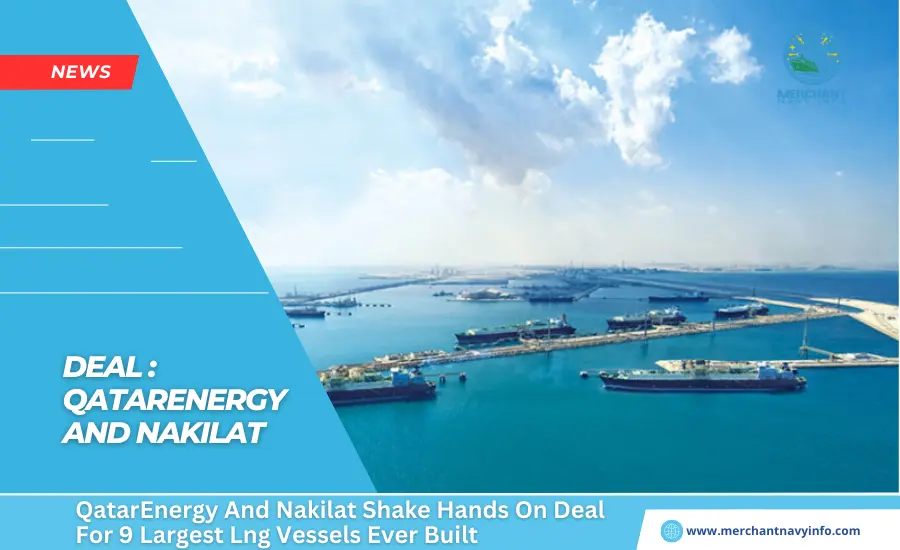
These nine QC-Max vessels, each with a capacity of 271,000 cubic meters. Will be half of the 18 modern QC-Max class LNG vessels. Available thanks to a $6 billion contract signed with the leading nation of Qatar Energy. equivalent. China’s Hudong Zhonghua Shipyard is part of the China State Shipbuilding Corporation (CSSC). These vessels are equipped with a low-speed dual-fuel propulsion system. Also, her NO96 Super + containment system has an overall length of 344 meters. Width of 53.6 meters, depth of 27.2 meters, and also a planned draft of 12. meter.
The agreement with Nakirat was announced on May 8 at Qatar Energy’s headquarters in Doha by Saad Sherida Al Kaabi. Qatar’s Minister of State for Energy Affairs, President and CEO of Qatar Energy, and also CEO of Nakirat. Signed by Abdullah Al Sulaiti. The signing ceremony was attended by executives from Qatar Energy, Qatar Energy LNG, and also Nakirat. On this occasion, Mr. Al Kaabi said: “We are very proud that Qatar’s leading champion in LNG. Transport and Maritime has joined the list of world-class shipowners operating our state-of-the-art QC-Max LNG vessels. The biggest thing ever. There is no doubt that this is further evidence of Nakirat’s significant capabilities.
Mega Shipbuilding
The company’s mega-shipbuilding program will begin in September 2023, with contracts signed to build 17 LNG tankers. Based on the TCP Agreement, the company has also entered into a contract with Nakirat. To own and operate up to 25 conventional LNG tankers starting in March 2024, and also to date. Has totaled 18 QC-Max class LNG carriers for a total of 122 vessels. We have a fleet of state-of-the-art ships. The new vessel is expected to be delivered by the end of the third quarter of 2024.
“With the signing of the industry’s largest single vessel contract last month. Qatar Energy continues to implement its historic LNG carrier expansion program, also with Nakirat and our carefully selected international ship owners maintaining our fleet to the highest standards. It is clear that the latest safety, technical, and environmental standards are in operation to ensure that our vessels are upgraded to the latest safety, technical, and environmental standards.
Persian Gulf
The Persian Gulf country’s energy giant is expanding its gas pipeline by adding another expansion project to its North Field arsenal through the North Field East (NFE) and North Field South projects (NFS). The wheels of increasing reserves have begun. Combined with the North Field West (NFW) project, the country’s LNG production capacity is expected to increase by almost 85% by 2030 compared to current production levels.
Qatari strongmen are also working to increase oil production at the country’s largest offshore oil field by about 100,000 barrels per day. To achieve this objective, the company has commissioned several companies, including McDermott, HD Hyundai Heavy Industries, Larsen & Toubro, and China Offshore Oil Engineering (COOEC), to invest in a $4 billion engineering, procurement, construction, and installation (EPCI) ) Signed a contract package. Qatar Energy’s plan to increase oil and gas production will balance energy security, affordability, and sustainability, allowing countries around the world to advance their energy transitions, Al Kaabi says. This is consistent with the opinion of









